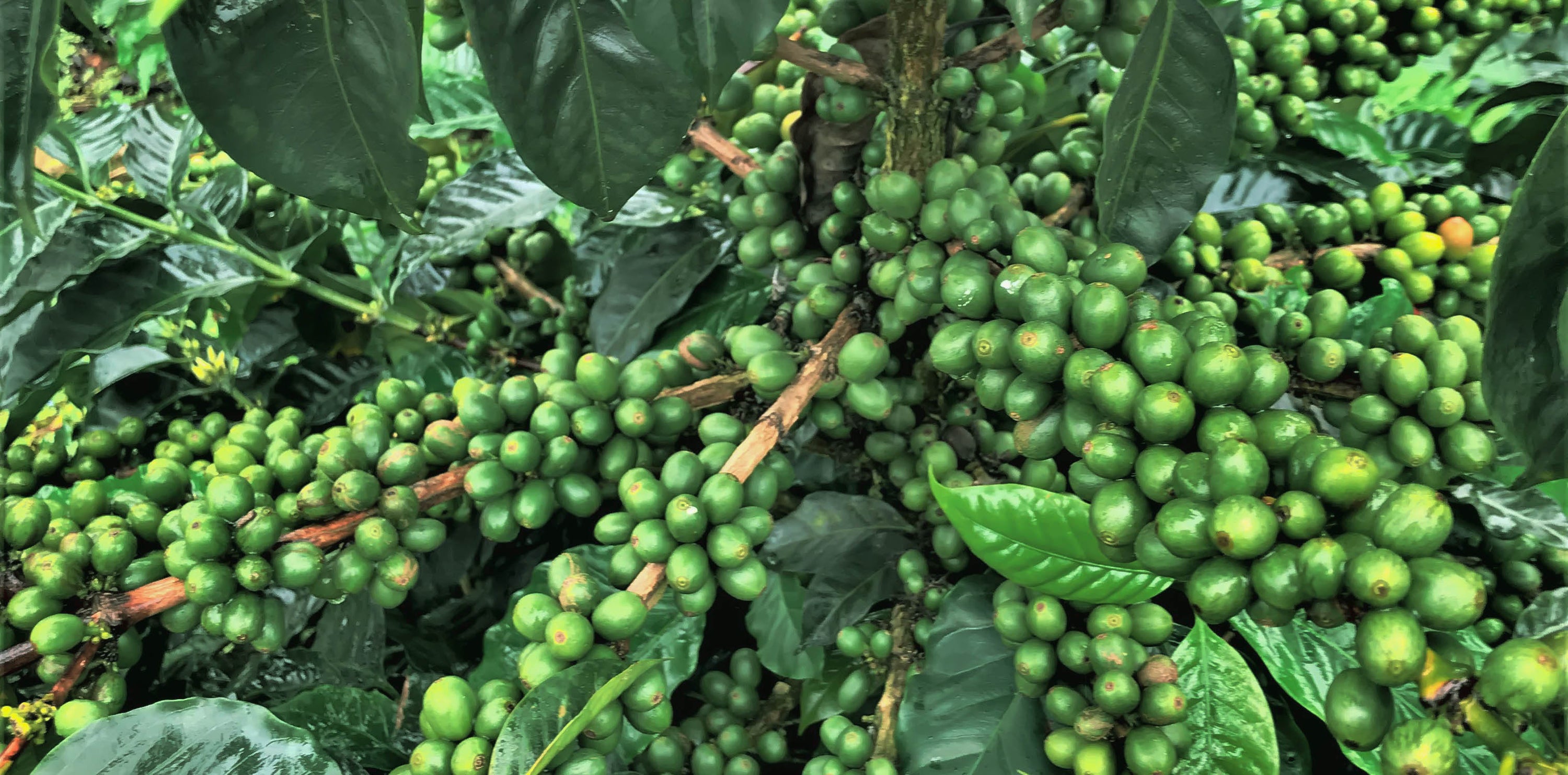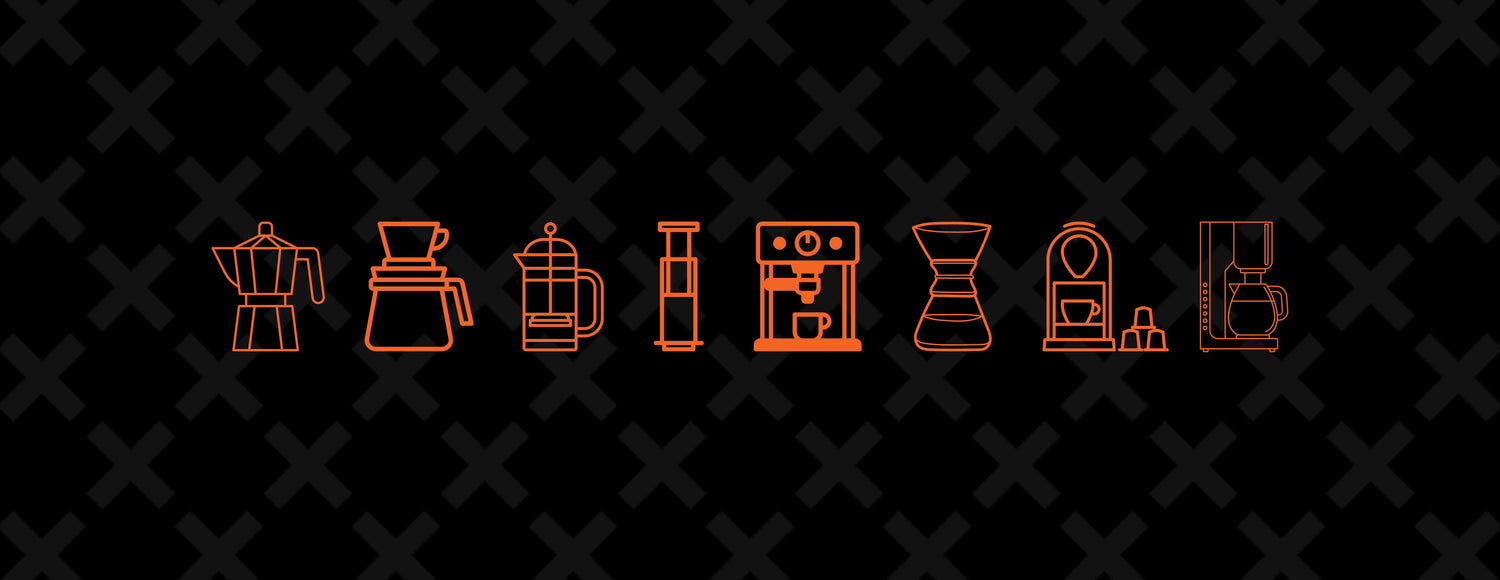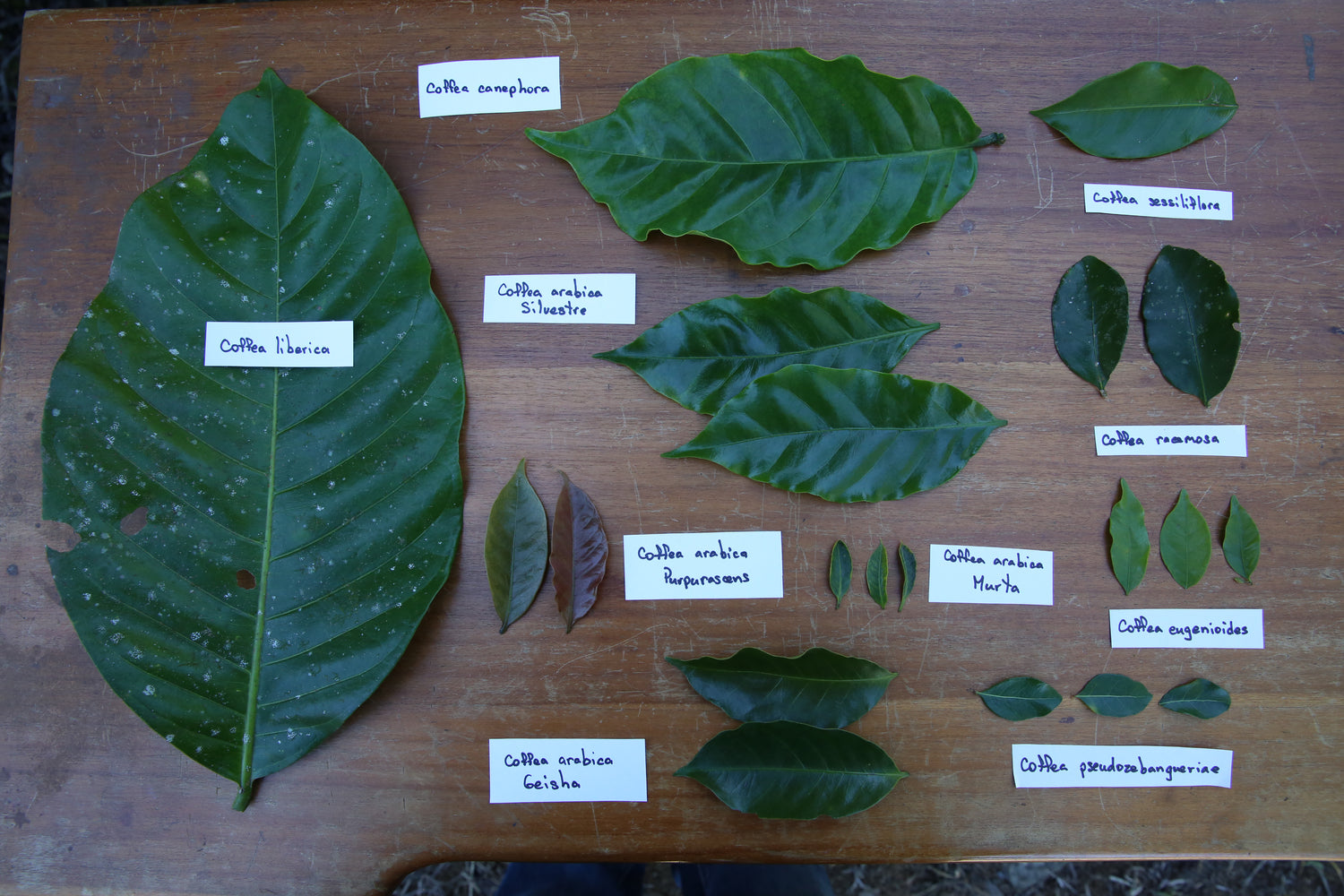
A History of Variety
Do you enjoy variety? The occasional absence of uniformity? And how far does this extend into your daily brew? As you read this, you may be enjoying your favourite FiXX, brewed just the way you like it. Maybe you're the sort of person who orders the same thing, every time, anywhere. You might not even care. "Shut up and give me a damn coffee!"; is a regular morning mantra. There are a variety of ways to brew and consume coffee. But how much do you know about coffee varieties? Read on to find out more.

Understanding Varieties
So to begin, let us think about wine (no, not like that). Cabernet Sauvignon, Pinot Noir, Chardonnay, to name but a few, are wines that may be familiar to you. Too familiar to myself, sometimes. But generally speaking, people understand that these names mean something. And you may know by just reading them, the flavour spectrum that each will fall in to. But are you aware that they're all, in fact, the names of different varieties of grape? When it comes to coffee plants, however, the differences in flavour from one variety to the other is more subtle when compared to grapes. And this is fine. We're more interested in the seed within than the fruit surrounding it.
With the coffee plant, growing conditions, processing, and roast will add more to the final taste of your cup of coffee than the coffee cherry itself. Not that the fruit doesn't add to the flavour, of course. Growing conditions and processing are obviously contributing factors in the quality of your favourite glass of wine too. But, because wine is essentially fermented grape juice (yum!), the fruit variety is more relevant.
What are Coffee Varieties?
The point I am trying to make (while not getting too distracted about wine), is that there are numerous varieties of grape. And there are also numerous varieties of coffee. Some of these are old and unique, while some were developed, planned and cross bread for agricultural reasons. Some, just mutated over time to become something distinct. But each of them have different characteristics, and potentials, and their own stories. There are, also, far too many for little old me to try and fit into one blog! So what I'm going to do is focus on five(ish). Varieties that are widespread throughout the coffee world, and that all feature at least once, in our FiXX range.
A little while back, I wrote about the coffee plant. More specifically, about the Arabica and Robusta plants. In that piece, I mentioned how the origins of these were in the forests of Southwestern Ethiopia. Yemen and Sudan also lay claim to this, but we don't have time to get into that now. So, back in your boxes, please. But Yemen certainly played a pivotal role in the foundation story of coffee as this is where it began to spread out globally. The native Ethiopian Coffee plants that were first farmed in Yemen formed the first two central and important varieties, Typica and Bourbon. Any chats about coffee varieties, cannot, but begin with them.

Typica
Found in - FiXX Classic, Cubano, Organic
A tall plant with bronze leaf tips, and large bean size. Great quality potential, but with a low yield and susceptibility to coffee plant diseases.
Origins
As the popularity of coffee grew in Yemen, it began to spread outward. In the late 1600s, plantations began popping up in India. It was from these plantations that Dutch traders "acquired" some coffee plants. The legality of this acquisition has often been debated. But the general consensus is that the Dutch traders, well, pretty much just nicked them. Either way, the plants were taken to the island of Java, Indonesia, which at the time, was a Dutch colony. This time in isolation on Indonesia, and its subsequent movement around the world, is how Typica began to separate from the native Ethiopian coffee plant.
In 1706, a single coffee plant was brought from Java to Amsterdam and was given a home in the botanical gardens. Amazingly, this one plant is responsible for much of the global spread of coffee. As a gift in 1714, an offspring plant was given to the French King, Louie XIV. This was a good-will gesture after the signing of the Treaty of Utrecht; a peace treaty signed after the War of the Spanish Succession. You can look into this war further if you wish. I tried but had to duck out after going crosse eyed when reading about a country in Europe called Savoy. But that's not important right now. Or ever, possibly(apologies to any Savolians out there. Or is it Savolish?).
Expansion
Anyway, in 1719, plants were sent from Amsterdam along colonial trading routes to Dutch Guiana (now Suriname, in the north of South America). From here it reached northern Brazil in 1727, reaching the south by 1760-1770. Before spreading onwards to Peru and Paraguay.
Meanwhile, in Paris, the French began sending their seeds along their own colonial routes to Martinique in the West Indies in 1723. From there, it went onto The Dominican Republic, to Cuba, into Central America (Costa Rica, El Salvador) and down to Colombia. In fact, until the 1940s, Typica made up the majority of coffee plantations in Central and South America. And all of them ancestors of that original plant in the botanical garden in Amsterdam.

Bourbon
Found in - FiXX Classic, Cubano, Organic, Lisbon, Seattle.
A tall plant with green leaf tips and average bean size. Very good quality potential, with a medium yield. Susceptible to major coffee plant diseases.
Origins
Back to Yemen. This time involving the French; who were trying to introduce coffee plants from Yemen to Bourbon Island (now La Réunion) in the Indian Ocean. They attempted this three times in 1708, 1715 and 1718. The plants initially struggled to take hold, and only a few plants from the second attempt were successful. It's possible and has been suggested, seeds from the gifted Dutch tree arrived here too. If this is true, then the legacy of that one plant in Amsterdam grows even more significant. Either way, coffee did eventually flourish there. And in their isolation, the Bourbon variety was born. The difference was slight but significant. It produced 20%-30% more fruit than Typica strains.
Expansion
It wasn't until the mid-19th century before it began to leave the island. But leave it did, with the French missionaries known as Spiritans who had established themselves on the island of Bourbon. In each new missions they set up on the east coast of Africa, they brought coffee plants with them. And let's be honest, if you're going to try and explain the Bible to someone, the least you can do is offer them a coffee first!
The Bourbon plant arrived in Zanzibar, off the African east coast in 1859. Then on to Tanzania in 1862 and into Kenya by 1893. All of the resulting plantations were from seeds relating back to the original coffee plants on La Réunion. During this time, some Bourbon plants made it to the south of Brazil where it quickly gained popularity due to its higher-yielding harvest. It then rapidly spread north into other parts of South and Central America, where it is still cultivated today. And it was in Brazil that a natural mutation occurred, bringing us to our next variety.

Caturra
Found in - FiXX Classic, Cubano, Organic, Seattle, Decaf.
A dwarf/compact plant with green leaf tips and average bean size. Good quality potential, with a good yield. Susceptible to major coffee plant diseases.
Origins
Sometime between 1915 and 1918, on a plantation in the Minas Gerais region of Brazil, framers discovered something odd. Some new coffee plants on their estate were growing smaller than usual. But not to the detriment of the harvest. If fact, they found the smaller plants much more manageable to harvest. It was the result of a single-gene mutation causing the plant to grow shorter, called dwarfism. It was the first naturally occurring coffee mutation ever found, and breeders were naturally intrigued. In 1937 the Instituto Agronomico (IAC) of Sao Paulo received a sample of seeds from this plant and began a mass selection process. In the following years, the seeds from the superior plants were separated and continually reproduced. Eventually, the Caturra variety was isolated.
Expansion
Caturra was found to have a higher yield than Bourbon. Paradoxically, this was due to its small size. Because it was more petite, plants could be grown closer together. Harvesting became a more straightforward affair too. As well as this, Caturra generally matures quicker and was found to be more resistant to coffee plant diseases than both Typica and Bourbon. Although it was never officially released in Brazil, it did become popular and took a strong foothold in Central America. It was first introduced in Guatemala in 1940. Heading from there to Costa Rica, Honduras and on to Panama. It remains today, one of the most economically crucial coffees in Central America. Caturra is also known as one of the parents of our next plant.

Catimor
Found in - FiXX Classic, Organic, Decaf.
A dwarf/compact plant with green leaf tips and large bean size. Good quality potential, with a very high yield. Resistant to major coffee plant diseases.
Origins
Catimor falls into the category of a cultivar meaning, it was horticulturally developed. In Portugal, by the CIFC to be precise, a research institute famous for its work on Coffee Leaf Rust. This primary coffee disease is responsible for decimating massive amounts of plantations globally. In 1958, the CIFC received fascinating hybrid seeds from the island of Timor. What made this hybrid stand out was that it was a natural, spontaneous cross between C. arabica and C. canephora (Robusta). As Arabica was an ancestor of Robusta, it had an extra four chromosomes. Which biologically speaking (something, something, something, scientific jargon) meant it was highly unusual. The great thing about the Timor Hybrid was the principal Robusta trait it carried was its resistance to Coffee Leaf Rust. Needless to say, the coffee world was excited.
Expansion
Back to Portugal and the CIFC, who by 1967, had isolated seeds with strong disease resistance. They then began the undoubtedly fun process of hybridising the hybrid. And one of the first crosses they did, was with Caturra. This produced a distinct group of cultivars that were dwarf in stature, making them higher-yielding whilst also being resistant to the dreaded Coffee Leaf Rust. Arriving in Brazil in 1970, it was tested by the IAC and dubbed "Catimor", a merging of the names Caturra and Timor Hybrid (clever, hey?). From here, it began its journey throughout Latin America, while the CIFC distributed throughout the rest of the coffee world.

Ethiopian Heirloom
Found in - FiXX Oslo
Origins
And finally, back to where it all began, Ethiopia. Not only is it considered the birthplace of coffee, but it is also regarded as the cradle of humanity. Is there a connection between the two? Probably not. All I can say is my day evolves much quicker when coffee is involved. The name Heirloom, or Landrace as it is sometimes referred to, is a blanket term for any coffee grown in Ethiopia that hasn't been categorised as its own species.
But why haven't they been indexed, you may ask. Well, over thousands of years of natural evolution, mutations and hybridising, Ethiopia has turned into a virtual Willy Wonka style land of coffee plants. When you couple this with the fact that names change from region to region, you end up with a mind-boggling amount of varieties—up to 10,000 by some estimates! Ethiopia Heirloom is basically an umbrella term for coffees from Ethiopia.
Expansion
Steps are being taken, however, to categorise at least some of these unique varieties. The Jimma Agricultural Research Centre (JARC) was established in 1967 to do just that. With defined varieties comes the ability for farmers in Ethiopia to demand better prices for coffee being sold to the speciality market. And rightly so. The JARC are responsible for identifying, amongst others, the varieties of Harar, Sidamo, and Yirgacheffe; each named after the region from where they hail. You may be familiar with these names as they have each featured in our Single Origins coffees from Ethiopia (currently Yirgacheffe). And who knows what gems still await identification. The originators may yet be the new innovators.
In Conclusion...
So there you have it. Well, a tiny bit of it anyway. Believe you me, I have only scratched the surface here. But that's one of the great things about coffee; it is so much more than a daily beverage. Every cup is packed full of science and history. Figuratively speaking of course. But with knowledge comes appreciation. And hopefully, that appreciation brings an understanding that life is too short to drink crap coffee. So why risk it? Visit fixxcoffee.com for your favourite FiXX and enjoy variety, the coffee of life.
Thanks for reading.
Kevin





